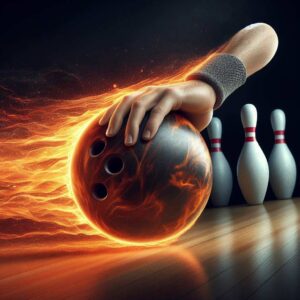Bowling, the age-old pastime of knocking down pins with a ball, has sparked an ongoing debate: Is it a sport or simply a hobby? This question has divided enthusiasts, athletes, and casual players alike, with compelling arguments on both sides.
In this comprehensive blog post, we’ll delve into the characteristics that define a sport and a hobby, examining where bowling fits into this spectrum.
The world of sports is filled with physical exertion, competition, and strict rules governed by official bodies. On the other hand, hobbies are often recreational activities pursued for leisure and enjoyment, without the same level of structure or competitiveness. As we explore the nuances of this debate, we’ll uncover the intricate details that make bowling a unique and multifaceted activity.
What Defines a Sport?
To understand whether bowling qualifies as a sport, we must first establish the criteria that typically define an activity as such. Generally, a sport is characterized by the following:
- Physical Exertion and Athletic Ability: Sports demand a certain level of physical effort and athletic prowess. They require participants to possess specific skills, coordination, and endurance to excel. From the intense cardiovascular demands of running to the precision and control needed in gymnastics, sports challenge the human body and mind.
- Competitive Nature: At the core of any sport lies a competitive spirit. Sports involve individuals or teams competing against one another, striving to outperform their opponents within the established rules and regulations. This competitive aspect fuels the drive for excellence, pushing athletes to train harder and hone their skills.
- Governing Bodies and Rules: Legitimate sports typically have governing bodies that oversee and regulate their respective disciplines. These organizations establish rules, standards, and guidelines to ensure fairness, safety, and integrity within the sport. They also organize competitions, sanction events, and maintain records.
- Training and Practice: Achieving success in sports often requires dedicated training and practice. Athletes invest countless hours perfecting their techniques, developing their physical abilities, and strategizing to gain a competitive edge. This commitment to improvement is a hallmark of sports.
What Defines a Hobby?
In contrast to sports, hobbies are generally defined as:
- Recreational Activities: Hobbies are pursued primarily for leisure, enjoyment, and personal fulfillment. They serve as a means of relaxation, stress relief, and creative expression, rather than intense competition or physical exertion.
- Lack of Formal Competition or Organized Structure: While hobbies can involve friendly competitions or challenges among participants, they typically lack the same level of formal organization, governing bodies, and strict rules found in sports.
- No Specialized Training or Physical Demands: Hobbies often do not require extensive training or physical preparation. They can be enjoyed casually without the need for rigorous conditioning or highly developed skills.
Bowling: A Sport or a Hobby?
Now that we’ve established the general characteristics of sports and hobbies, let’s analyze where bowling fits into this equation.
- Physical Exertion and Athletic Ability: Bowling, at its core, involves rolling a heavy ball down a lane with the aim of knocking down pins. While it may not demand the same level of cardiovascular exertion as running or cycling, it does require a degree of physical effort, coordination, and technique. Professional bowlers possess exceptional skills in controlling the ball’s speed, rotation, and trajectory, honed through years of practice.
- Competitive Nature: Bowling has a rich competitive landscape, with numerous leagues, tournaments, and competitions at various levels. From local recreational leagues to prestigious professional circuits like the Professional Bowlers Association (PBA) Tour, bowling offers ample opportunities for individuals to compete against one another. The desire to outperform opponents and achieve higher scores is a driving force within the sport.
- Governing Bodies and Rules: The bowling community is governed by organizations such as the United States Bowling Congress (USBC) and the World Bowling Organization. These bodies establish standardized rules, regulations, and guidelines for the sport, ensuring fair play and consistency across various competitions and venues.
- Training and Practice: While bowling may not demand the same level of intensive training as some traditional sports, professional and competitive bowlers dedicate significant time and effort to honing their skills. They work on perfecting their form, developing consistent release techniques, and studying lane conditions and ball dynamics. This level of dedication and practice is comparable to that of athletes in other sports.
Counter-Arguments and Perspectives:
Despite the evidence suggesting that bowling possesses many characteristics of a sport, some argue that it should be considered primarily a hobby or recreational activity. Here are some counter-arguments:
- Accessibility and Social Aspect: Bowling is widely accessible and can be enjoyed casually by people of all ages and skill levels. It is often seen as a social activity, where friends and families gather for a fun outing, rather than a highly competitive endeavor.
- Lack of Cardiovascular Demands: Critics argue that bowling does not require the same level of sustained physical exertion as other sports, such as running, cycling, or team sports like football or basketball. The effort involved in bowling is more focused on technique and control rather than endurance.
- Recreational Leagues and Casual Play: While competitive leagues and tournaments exist, a significant portion of bowling takes place in recreational settings, where the primary focus is on leisure and enjoyment rather than intense competition.
Conclusion
After carefully examining the characteristics of sports and hobbies, and analyzing the nuances of bowling, it becomes evident that this activity straddles the line between the two.
Bowling undoubtedly possesses many attributes of a sport, such as physical exertion, competitive leagues, governing bodies, and the need for dedicated practice. However, it also retains aspects of a hobby, with its accessibility, social nature, and the ability to be enjoyed casually without intense training or competition.
Ultimately, the classification of bowling as a sport or a hobby may depend on the individual’s perspective and level of involvement. For professional and competitive bowlers, it is undoubtedly a sport, requiring discipline, skill, and a deep commitment to excellence. For casual players, bowling may be primarily a recreational hobby, a fun activity to enjoy with friends and family.
Regardless of where one stands in this debate, the enduring popularity and widespread appeal of bowling are undeniable. Whether viewed as a sport or a hobby, it continues to captivate millions worldwide, offering a unique blend of physical and mental challenges, social engagement, and sheer enjoyment.
So, the next time you step up to the lane, embrace the multifaceted nature of bowling and revel in the experience, whether you’re a seasoned competitor or a casual enthusiast seeking a delightful pastime.





